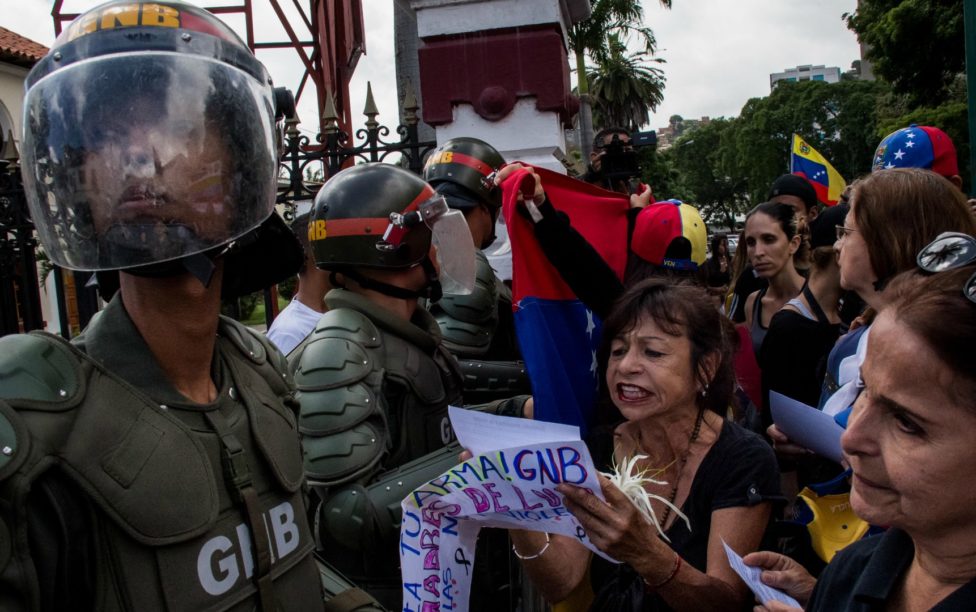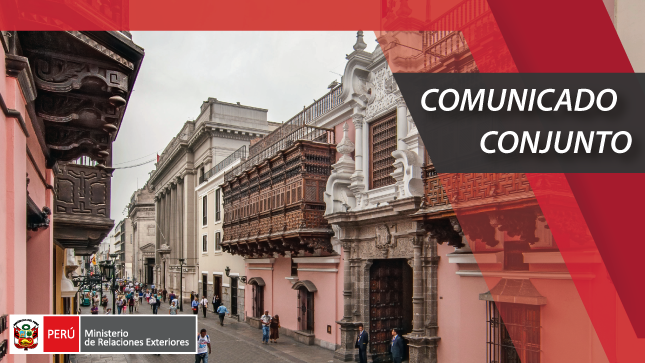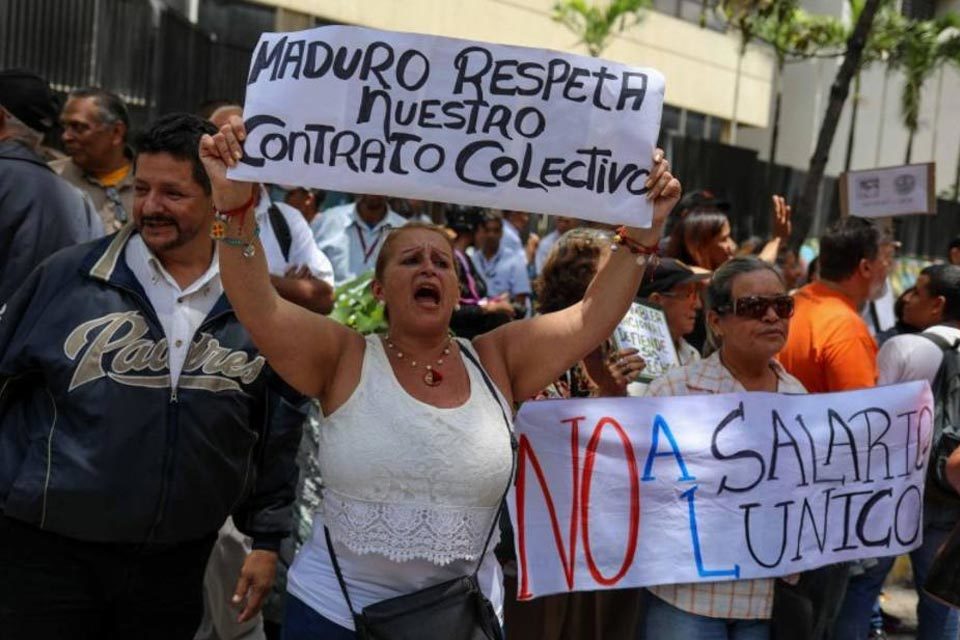Three days of shootings in the Caracas district of Cota 905 besieged a third of the population of nine parishes of Venezuela’s capital and led to the displacement of a group of residents who, after 72 hours of continued armed confrontation, took advantage of the first opportunity to leave their homes with what little they could carry and seek refuge until further notice
“Nobody goes in and nobody goes out.” The order resounded through a loudspeaker with which members of the gang descended along the stairs and alleyways of Cota 905. It was 6 in the morning of July 8; the confrontation had been going for 16 hours and four people had already died since the beginning of the armed clashes that paralyzed nine parishes in the capital city, just over 44 square miles besieged by bullets, more than a quarter of the total surface of Libertador municipality.
Those at home had been locked up since the afternoon of July 7, when the shootings began around 3:00 pm. Those who had left that morning were also unable to return and began seeking forced asylum at their relatives or friends’ places to spend the night and return home in the morning. It was only the first day.
Nobody goes in, nobody goes out. Residents of Cota 905 were warned through loudspeakers, but people in El Paraíso, La Vega, El Cementerio, Prado de María, El Valle, Quinta Crespo, San Juan, and nearby areas only got to hear the ‘warning’ of the gunshots and explosions that began to spread during the morning and continued all day long until 9:30 pm. Nobody went in, nobody went out. Brief moments of silence during night allowed some to raise their heads from the floor, pick up casings and the broken glass from their windows, and let their relatives and neighbors know that they were alive. Barely an hour’s truce, but then more bullets until almost 3:00 in the morning.
The third day of gunfighting was starting. Since 2:45 pm on Thursday, houses in Cota 905 and part of El Cementerio district had their power supply cut off. Residents spent a very long night amid the sound of bullets crushing their windows, people screaming and running up and down, shadows sticking to walls, kicking and knocking on some doors. Inside, the confined people were still in the dark, sheltered with children and older adults on mats thrown in the middle of bedrooms and bathrooms, away from walls that faced the street.
“I’m fleeing with my kids and what I’m wearing,” says Marbelis* (real identity withheld), a resident of the Las Quintas district. With a few sentences, she summed up her night during the interview because she had to save the little battery she had left in her cell phone: “We ate bread all day because my kitchen faces the street and I couldn’t prepare anything because my younger child would start crying if I don’t hold her in my arms. She is four years old. The shots could be heard from inside the house, but you never know where they are coming from. I was alone all day with my two daughters and my nephew because my sister couldn’t get home”. She also told us that his 73-year-old mother had stayed with relatives in San Martín since Wednesday. “I’m also going there because the police are coming, and if they enter my house, I don’t know what I’m going to do with the children.”
Marbelis has relatives who can host her, but other residents don’t have this option and decided to wait for dawn to leave. “I do not know where I am going, but I’m moving far from the shots,” says a 43-year-old woman who left her house in the El Naranjal sector at 6:00 am, along with four other members of her family. “I have teenage children, and they are the first to be shot whenever the police come up. The police shoot first and later ask questions. They are not going to kill my kids like nothing because I did not raise thugs ”.
Wandering away from home
From the early morning, the areas surrounding Cota 905, Roca Tarpeya, Puente Hierro, and El Cementerio witnessed the journey of people carrying bags in search of a way out. Around 4:00 am, word spread among the residents that the police were going to evacuate certain key sectors, as part of the operation that began after 6:00 am.
But there was no need for the police to announce an evacuation. The residents waited for the first lights of the morning and came out carrying only what they were wearing. For many, the idea of security forces taking over the area was the last straw.
A resident of a sector of Cota 905 next to La Vega affirmed: “I locked the door and left. No one stayed. If they knock down the door, break in, and rob me, well, there is no other choice. But they often plant evidence at your place and then ask you for money to let you go because for outsiders, everyone who lives here is a thug. I don’t know where I’m going but I won’t stay locked up here”.
Some of them just wandered around and sat in the street waiting for the rain that darkened the morning to clear
“Many people have begun to leave since dawn. As soon as the shooting subsided, whole families began to flee”, assured a teacher living in the area. Greatly affected by three days of continuous shootings, she affirms having heard two young men pleading for their lives in the early hours of July 9, followed by bursts of fire; traces of executions that have not yet been officially reported on the list of the deceased.
“I’ve heard that entire families are now wandering in public squares, with nothing more than what they are wearing. They left everything behind to flee from both the continued shooting and the security forces that come in search of the gangs,” she said. However, a school assistant told TalCual that, until the noon of July 9, the operations of the CICPC officers and detectives had been different from previous occasions. “They used to knock down the doors, but this time they just knocked and checked without making a mess,” she said.
However, other areas have not been that lucky. “The police forces came and used pry bars to knock down the doors of the houses they found empty. They took everything they found along their way: TV sets, speakers, and even food in some cases” said a woman living next to the El Plan district.
War in Cota 905
Father Alfredo Infante, the parish priest of the San Alberto Hurtado church, assured that the phenomenon of forced displacement due to violence is not new, but it has worsened and become more visible in the context of the events that took place in early July in Cota 905, El Cementerio, El Valle, El Paraíso and La Vega, which has affected nine of the 22 parishes of the Libertador municipality.”
Infante explained that in 2016, La Vega began to become a shelter for those fleeing violence from Barlovento, Valles del Tuy, and some areas of Carabobo and Aragua states; But both temporal and permanent displacement began to be observed in the area since the beginning of this year after the violence of the confrontations between the police and criminal gangs intensified and 23 people were assassinated in an early January security operation. Many people have fled to other areas of Caracas and others to the provinces of the country. “Some people have been selling their homes at very low prices, while others have left with nothing,” he said.
Infante reiterated that after the shootings that took place in early June in these areas of Caracas “displacement became much more visible because we had never reached a war-like situation like the one we experienced this time.”
Regarding the attention needed by the people who have decided to leave their homes for fear of the armed confrontations, Father Alfredo Infante recalls that “it is an obligation of the State”, but condemns that, currently, there are no institutions in Venezuela with the mandate of assisting the displaced population. He insists that this is an obligation of the authorities because these are situations contemplated in international treaties and conventions regarding displaced persons and refugees.
At the same time, several NGOs such as Otro Enfoque have requested help through social media to address the needs of children and families they are hosting in makeshift shelters. “We are setting up a place of refuge for our kids who live in Cota 905 and have managed to leave the conflict zone. We need mats, sheets, pillows, food, and clothes ”.
Marino Alvarado, Provea Research Coordinator, highlighted the increase in internal displacement as a result of the growing violence in the country. The most recent example was the clashes between the Armed Forces and irregular groups in Apure, which forced more than six thousand people to mobilize to the neighboring town of Arauquita (Colombia) and other places.
Provea and the Gumilla Center have also identified displacements in the Barlovento area (Miranda) due to the dangerous presence of armed groups in the area, as well as in Maracaibo (Zulia) and Petare (Miranda).
In the case of the La Vega parish, Marino Alvarado explained that the damage inflicted by the armed gangs “is significant” given that, until recently, the area used to host families who fled from Barlovento and other violent places.
Internal displacement as a result of violence or in conflict zones is especially problematic for minors. The lawyer and general coordinator of Venezuelan NGO Cecodap, Carlos Trapani, pointed out that “all displacement implies a change, including a change in children and teenagers’ environment and interpersonal relationships. Above all, it has generated a feeling of uncertainty, and nothing harms mental health more than not knowing what will happen or when to get back a normal life, because many years ago, especially in those communities, people stopped having a normal life by having to cohabit with armed gangs and a State that makes attempts to regain control”.
“This is war and I don’t wish it on anyone, but we have to stay. We are a family of six. Who will host us? Besides, the only thing we have is here, a roof over our heads. We have to pray a lot and endure, ”says a teacher, a resident of Cota 905 for 40 years.
Translated by José Rafael Medina




